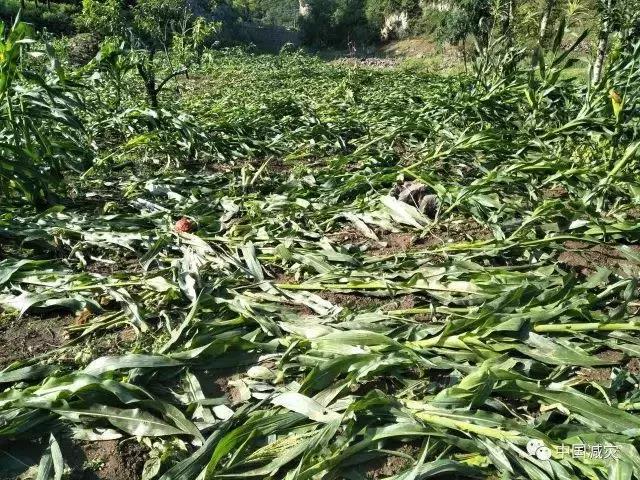Recently, it was learned from the Ministry of Agriculture and Rural Affairs that this year's No. 9 typhoon “Likima” has adversely affected corn production in five provinces (cities) and parts of northeast China since it landed in Zhejiang on August 10. In some areas, the corn plots are flooded, causing different degrees of lodging or stem breakage, affecting the growth and development of the corn in the early stage or the pollination and grouting in the middle and late stages, and the diseases such as stem-based rot and leaf spot disease are accelerated, which increases the difficulty of prevention and control. At present, most of the summer maize in Huanghuaihai has ended pollination into the filling stage, and the northeast spring maize is in the filling stage, which is the key period for the formation of yield. In response to the adverse impact of typhoon on corn production, the Agricultural Experts Group of the Ministry of Agriculture and Rural Affairs and the National Agricultural Technology Extension Service Center proposed guidance on post-disaster production recovery techniques.

First, strengthen classification management
According to the lodging of corn after the typhoon, the field management was carried out. The lighter-looking corn (the angle between the stem and the ground is greater than 45 degrees), let it stand up naturally; the heavier corn, especially the corn, is timely and righted, and the soil is 7-8 cm in the roots and is solid. Corn that has fallen before the booting stage should not be mobilized, otherwise it will easily damage the roots and affect the yield. The corn that has fallen after heading does not cut the leaves or go to the head. It is better to support the stalks. It is better to use 3-4 trees. For plots with severe stalk breakage, the broken plants should be removed from the field as soon as possible to avoid the effects of rot on normal plant growth, and other crops with shorter growth period should be replanted according to local conditions.
Second, timely drainage and topdressing
The corn field with stagnant water should be drained as soon as possible to reduce the humidity in the field and timely topdress. In particular, some areas in Zhejiang and Jiangsu are still in the early stage of fertility. After heavy precipitation and flooding, soil fertility is easily taken away by rainwater. After raining, it can be used to apply urea and potassium dihydrogen phosphate in a timely manner, and spray twice a time. 7 days apart, promote plant growth. Flooding is particularly serious, and timely replanting short-season crops to reduce losses.
The third is to strengthen disease prevention
After the corn is lodging, it will cause mechanical damage and is susceptible to diseases such as stem-based rot, sheath blight, and large spot disease. Stem-based rot can be used 25% leaf extract or leaf dry WP, plus 25% toxic mildew WP or 5% toxic Mn-Zn WP 600 times or 50% carbendazim WP 500 times liquid foliar spray. Sheath blight is treated with 5% Jinggangmycin, or 25% Rustine WP, or 24% Thiofuramide Suspension, or 25% Tebuconazole Wettable Powder, or 20% Ternary Moisturizing Powder. The affected area is evenly sprayed. Large spot disease is applied 30% per acre of pyraclostrobin and tebuconazole suspension 40 ml, or 32.5% pyraclostrobin and tebuconazole suspension 20 ml, or 65% mancozeb wettable powder 500 Double solution, or 70% methyl thiophanate WP 500 times solution, or 75% chlorothalonil WP 800 times solution, pay attention to rotation.
Contact: Mr. Ma
Phone: +86-0374-5699688
Tel: +86-0374-5699688
Email: [email protected]
Add: Fine Chemical Industry Park, Jianan District, Xuchang, Henan, China